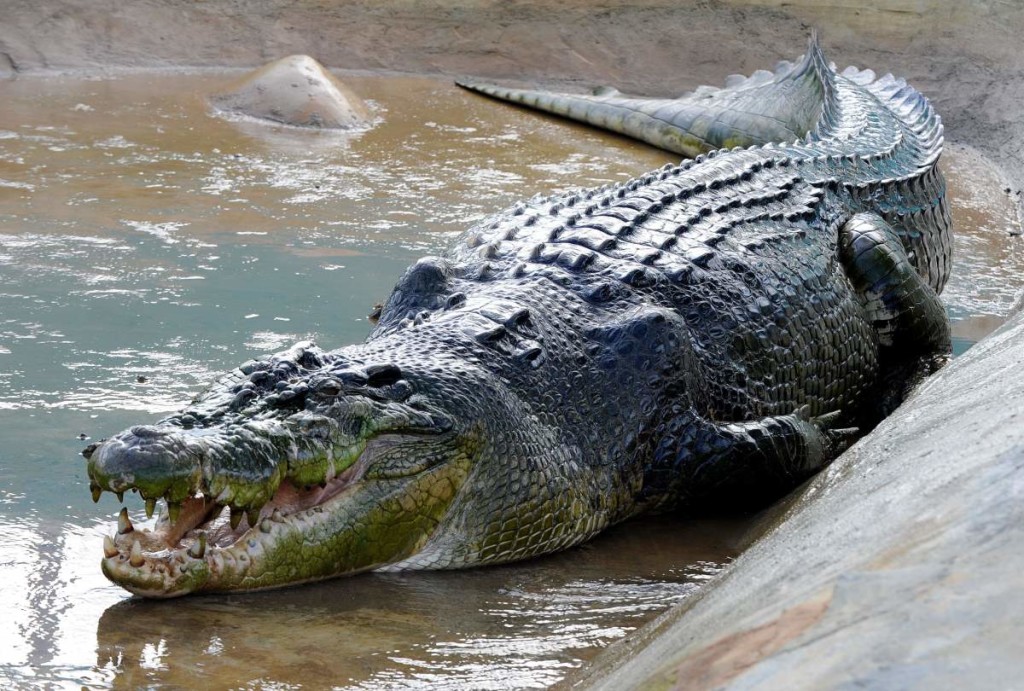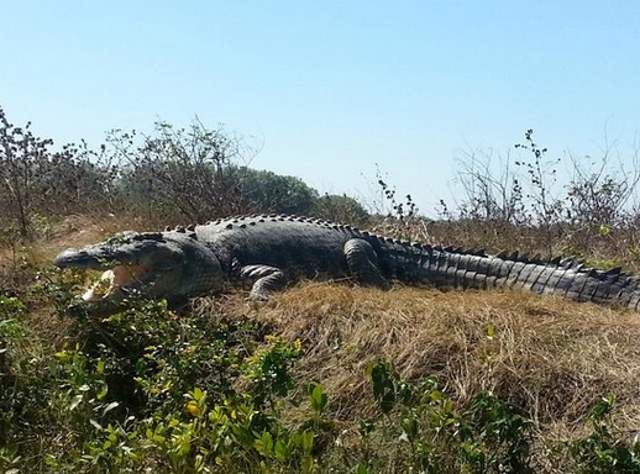NitroX
|
| (.700 member) |
| 19/07/18 01:08 AM |

|
|
|
Two record sized saltwater crocodiles, Lolong and Dominator.


https://ourplnt.com/worlds-5-largest-crocodiles-ever-recorded/
No. 2: Dominator (6.1 meters/20 feet)
Dominator, the saltwater giant
Dominator has never been officially measured but it is estimated that he measures up to 20 feet (6.1 meters) and weighs over a ton. He shares the same territory with another saltwater giant Brutus (Adelaide River, Northern Territory, Australia).
Current status: alive
No. 1: Lolong (6.17 meters/20 feet 3 in) – the largest crocodile ever measured
Lolong (crocodile)
Lolong
Measured at 20 ft 3 in (6.17 m), and weighed 2,370 lbs (1,075 kg), Lolong was the largest crocodile in captivity. He was also the biggest crocodile ever measured from snout-to-tail.
Lolong was an Indo-Pacific or saltwater crocodile (Crocodylus porosus). Australian crocodile expert Dr. Adam BrittonNotes 1 sedated and measured Lolong in his enclosure in November 2011, and confirmed him as the world’s longest crocodile ever caught and placed in captivity.
He was caught in a Bunawan creek in the province of Agusan del Sur in the Philippines on 13 September 2011. He was captured with the joint cooperation of the local government unit, residents, and crocodile hunters of Palawan. The giant crocodile was hunted over a period of three weeks; once it was found, it took around 100 people to bring him onto land. He became aggressive at several points during the capture and twice broke restraining ropes before eventually being properly secured. He was estimated to be at least 50 years old.
Lolong was suspected of eating a fisherman who went missing in the town of Bunawan, and also of consuming a 12-year-old girl whose head was discovered two years earlier. He was also the primary suspect in the disappearance of seahorses in the area. In the examination of the stomach contents after his capture, remnants of water buffaloes reported missing before Lolong’s capture were found, but no human remains.
The crocodile was named after Ernesto “Lolong” Goloran Cañete, one of the veteran crocodile hunters from the Palawan Crocodile and Wildlife Reservation Center, who led the hunt. After weeks of stalking, the hunt for Lolong took its toll on Cañete’s health. He died of a heart attack several days before the crocodile was captured.
Despite his initial aggressiveness, Lolong was remarkably gentle in his enclosure. Dr. Britton writes “This shouldn’t come as a surprise to anyone familiar with the effects of capturing large crocodiles from the wild. It’s a phenomenon called “capture myopathy”; the shock of being caught, poked and prodded, and introduced to a completely new and alien environment is a stressful experience, particularly for an animal as large as Lolong who has been master of his domain for decades. It might seem unusual to think of crocodiles as being susceptible to stress, but they’re just like any other vertebrate in that respect and something that anyone who maintains captive crocodiles should be aware of.”
The nongovernmental organization activist Animal Kingdom Foundation Inc., with the cooperation of People for the Ethical Treatment of Animals, had urged the local government of Bunawan to return Lolong to the creek of barangay Nueva Era, where the giant reptile was captured. But, in an ongoing debate, Bunawan mayor Edwin “Cox” Elorde and residents of the barangay opposed the crocodile’s release, arguing that he would threaten individuals living in the vicinity of the creek.
Lolong died in captivity just 18 months later he was captured, at around 8 pm on 10 February 2013. His necropsyNotes 2 revealed that he died from congestive heart failure compounded by fungal pneumonia, lipidosis of the liver and kidney failure. Here is a video which was shot when Lolong was alive:
According to Dr. Adam Britton, Lolong’s enclosure might not look pretty, but, in fact, crocodiles in the wild call muddy holes as “home”, they just look for any kind of shelter and the basic necessities for survival. So, Lolong was provided with those basic necessities. Crocodiles do not eat if they’re too stressed, but in Lolong’s case, he was eating and seemed to settle down into his new surroundings and behaving normally.
Britton also says “Anyone who actually met his caretakers would have realized he was well-loved. You might say they adored him.” He adds: “…there were also financial incentives to keep Lolong alive; he was popular, brought much money into the community, and generated a lot of national and international attention.”
So, despite his conditions look terrible to an unfamiliar eye, he was well-cared.
Britton concludes: “It would have been ideal to leave Lolong in the wild, but does such specious thinking have a place in our overcrowded world? A conflict between humans and wildlife can have major repercussions for conservation (not to mention human safety, which any level-headed human regards as being of prime importance). Yet at the same time, we can’t simply remove all wild animals simply because it makes us feel better, or safer. There has to be a compromise, and unfortunately for Lolong he was that compromise at that particular time and place. Perhaps his death can be a lesson for us.” (I recommend you to read Dr. Britton’s great article titled “What really killed Lolong?” on his blog.)
Lolong was officially certified by the Guinness Book of World Records as the “world’s biggest crocodile in captivity” at 20.25 ft (6.17 m).
Current status: dead